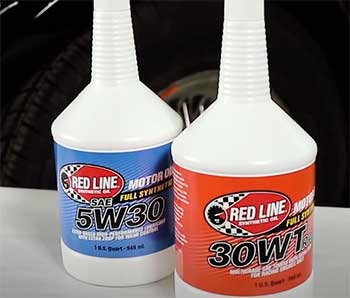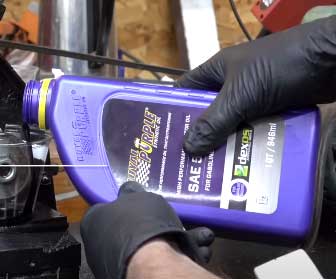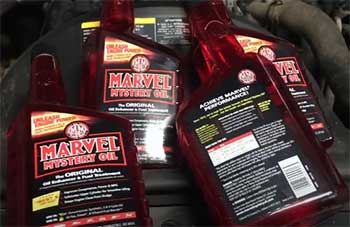There’s an old saying among motor enthusiasts, “The life of your engine depends on the quality of your oil.” Today, we’re focusing on two giants in the motor oil industry – Red Line and Royal Purple.
Both have made their mark in the lubrication landscape, but the question that has puzzled car owners and enthusiasts alike is – which is better?
A Comparative Table
| Feature | Red Line | Royal Purple |
| Base Oil | Polyol Ester Base | Synthetic Base with Synerlec |
| Key Strengths | Excellent thermal and shear stability | Enhanced film strength, reduced metal-to-metal contact |
| Performance in Extreme Conditions | Superior performance in high heat | Superior wear protection |
| Best Suited For | High-performance engines | Wide range of vehicles |
| Price | Generally higher | Premium, but offers excellent value |
Red Line: Pushing the Limit
Let’s start with Red Line. Born in 1979, Red Line Oil has established a reputation for quality and performance. The company’s roots in racing have informed its approach to consumer-grade products, prioritizing longevity and durability in high-performance engines.
- Pros of Red Line Motor Oil

Red Line shines in terms of thermal stability.
Their oils stand strong against intense heat, thanks to the unique polyol ester base.
This ensures your engine remains protected even under severe operating conditions.
Further, Red Line provides excellent shear stability.
This means that even under high pressures and temperatures, it maintains its viscosity, ensuring smooth operation and reducing engine wear.
- Cons of Red Line Motor Oil
However, no product is without its drawbacks. Red Line oils can be on the expensive side. The high-quality base oil and additive package come at a cost, making it a more significant investment compared to other options on the market.
Additionally, while it excels in high-performance engines, for everyday city driving or in lower performance engines, the benefits might not be as noticeable, potentially making it an overinvestment for some consumers.
Royal Purple: A Regal Alternative
Next, let’s turn to Royal Purple. Established in 1986, this Texas-based brand has been a favorite among car enthusiasts and DIYers, offering high-performance lubricants for a wide range of applications.
- Pros of Royal Purple Motor Oil

What sets Royal Purple apart is its proprietary Synerlec technology.
This additive enhances the oil’s film strength, reducing metal-to-metal contact, which in turn reduces wear and tear, improving engine longevity.
Royal Purple also boasts excellent oxidation stability.
This means it resists breaking down even after prolonged use, allowing for longer intervals between oil changes.
It’s a cost-effective choice, providing value for your investment.
- Cons of Royal Purple Motor Oil
However, like Red Line, Royal Purple is a premium product with a price tag to match. If budget is a concern, this may deter some buyers.
Some users also report that Royal Purple may not be as effective in older engines compared to newer ones. It’s something to keep in mind if you’re considering this for a high-mileage vehicle.
Key Differences Between Red Line and Royal Purple Motor Oils
While both Red Line and Royal Purple motor oils are positioned in the market as premium, high-performance products, they differ in certain aspects. These variances can significantly impact their suitability for your vehicle and overall performance. Let’s dig into these differences.
- Base Oil and Additive Technology
One key difference lies in the base oil and additive technology.
Red Line uses a polyol ester base, known for its excellent thermal stability and natural lubricity. It also makes use of high levels of zinc and phosphorus additives for improved wear protection.
On the other hand, Royal Purple uses a combination of synthetic base oils, enriched by their proprietary Synerlec technology. Synerlec enhances the oil’s film strength, reducing metal-to-metal contact, extending engine life, and improving efficiency.
- Performance in Extreme Conditions
Another factor to consider is how these oils perform under extreme conditions.
Red Line is specially designed to withstand extreme heat. The polyol ester base oil used in Red Line is exceptionally resistant to thermal breakdown, making it a superior choice for high-performance engines or for vehicles often exposed to high temperatures or severe driving conditions.
Royal Purple, however, emphasizes film strength and wear protection. Its Synerlec technology creates an ionic bond that adheres to metal parts, reducing friction and wear. This can lead to smoother operation, reduced engine noise, and potentially better fuel economy.
- Compatibility with Vehicles
Not all motor oils are equally effective in all types of engines. Both Red Line and Royal Purple offer a range of oils to suit different engines and conditions, but they each have their strengths.
Red Line is particularly well-suited to high-performance engines. Whether it’s for racing, towing, or simply a powerful road car, Red Line is designed to protect these high-stress engines.
Royal Purple, meanwhile, is widely recognized for its performance in a range of consumer vehicles. Although it’s often used in high-performance and modified engines, many regular drivers also report improved engine operation and performance.
- Price and Value
There’s no avoiding the fact that both these oils are premium products, and their price reflects that. But the value they offer can also vary.
While Red Line can be more expensive, its high thermal stability can protect engines from damage even under extreme conditions, potentially saving on repair costs down the line.
Royal Purple offers excellent value for the price, as it can extend the periods between oil changes thanks to its superior oxidation stability. This reduces maintenance costs over time.
Also Read: Comparison of Castrol And Super Tech Oils.
Frequently Asked Questions (FAQ)
Now, let’s tackle some common questions about these two motor oils:
Determining whether Red Line is better than Royal Purple depends on the specifics of your vehicle and usage. Red Line excels in high-performance, high-heat environments due to its excellent thermal and shear stability. In contrast, Royal Purple offers value for money and longer intervals between oil changes due to its superior oxidation stability.
There’s no definitive answer to this, as the “best” motor oil depends on your vehicle type, driving conditions, and personal preferences. However, Royal Purple is certainly one of the top contenders, given its Synerlec technology and excellent oxidation stability.
Both Royal Purple and Amsoil are well-respected brands in the motor oil industry. While Royal Purple boasts its Synerlec technology, Amsoil is also known for its high-quality synthetic oils. The best choice would again depend on your vehicle and driving conditions.
Comparatively, Royal Purple tends to perform better under extreme conditions due to its superior additive technology. However, Mobil 1 is a solid choice for everyday driving and often comes at a lower cost.
Wrapping Up
In conclusion, both Red Line and Royal Purple motor oils stand as top-tier choices for high-performance lubrication. While Red Line leads in terms of thermal and shear stability, Royal Purple offers enhanced film strength and excellent oxidation stability.
Your final choice should align with your specific driving conditions, engine type, and budget.
No matter what you choose, remember that regular maintenance and oil changes are key to keeping your engine running smoothly for years to come.


